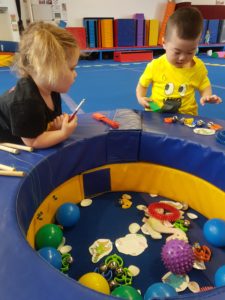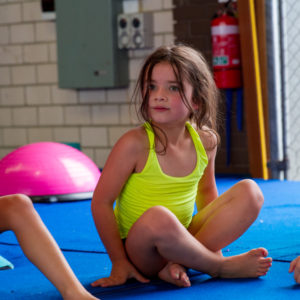Did you know that Australia has research based guidelines for the appropriate amount of physical activity, sedentary behaviour and sleep for all ages?
Did you know that Australia has research based guidelines for the appropriate amount of physical activity, sedentary behaviour and sleep for all ages? The Department of Health has written full guidelines for the amount of movement Australians should be getting in a 24-hour period. We've created a quick overview below, but click here if you'd like to read the full report.
Toddlers and Pre-schoolers
There is an important relationship between how much sleep, physical activity and sedentary behaviour a young child gets in a typical 24-hour period. These years are developmentally really important so activities like KinderGym can help young kids as they grow. These recommendations are for kids who haven't started school yet, and have been created by the Department of Health irrespective of cultural background, gender or ability.
Toddlers (aged 1-2 years)

Toddlers shouldn't be restrained for more than 1 hour at a time or sit for extended periods. This includes things like car seats, strollers and high chairs. The Department of Health also recommends that toddlers younger than 2 avoid screen time in these sedentary periods. It's recommended that toddlers 2+ only have 1 hour max screen time in each 24-hour period, but less is better. When toddlers are sedentary this is a great time to engage their fine motor skills and engage in activities like singing, puzzles, and reading stories.
Sleep time! The Department of Health recommends that toddlers get between 11 and 14 hours of good quality sleep during each 24 hour period (naps included). It's also important to have consistent sleep and wake-up times.
Pre-Schoolers (aged 3-5 years)
Pre-schoolers should also be aiming for 180 minutes a day of various physical activities. 60 minutes of this should be energetic play - just like Toddlers, energetic play for the Pre-Schoolers includes things like running, jumping and twirling.
Sedentary periods for the Pre-Schoolers are the same as our 2+ toddlers: aim to not have them restrained for more than 1 hour at a time or sit for extended periods, 1 hour max screen time in a 24-hour period (but less is better), and during sedentary time get them engaged with activities like singing, puzzles and reading stories.
When it comes to sleeping, aim for 10-13 hours of good quality sleep with consistent sleep and wake-up times. Just like the Toddlers, this 10-13 hours includes nap time.
Children and Young People (5-17 years)
Physical activity is great for the health of Children and Young People. It creates opportunities to make new friends and develop physical and social skills. We're biased, but we think our Gymnastics, Ninja, Tumbling and Acrobatics classes are a fantastic way for this age group to hit their physical activity quotas. These recommendations are for kids who have started school, and have been created by the Department of Health irrespective of cultural background, gender or ability.
It's recommended that kids in this age group accumulate 60 minutes or more of moderate to vigorous physical activity each day doing mainly aerobic activities. These 60 minutes should be complemented with several hours a week of a variety of light physical activity. Activities that include strengthening of muscles and bones should be included at least 3 days per week. If you really want to achieve greater health benefits, switch out sedentary time with some additional moderate to vigorous physical activity.
As this age group is attending school, there will be more hours of the day that they are engaged in sedentary behaviour. Make sure you take regular breaks from long periods of sitting and reduce recreational sedentary screen time to no more than 2 hours per day.
When it comes to sleep, it's important that Kids aged 5-13 years get between 9-11 hours of uninterrupted sleep per night. Teenagers (14-17 years) should aim for 8-10 hours of uninterrupted sleep each night. Both age groups should aim for consistent bed and wake-up times.
The full guidelines also includes movement recommendations for adults, click here for the full report.


